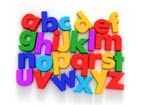Somehow, the term “digital divide” seems a bit antiquated. The gap between the tablet/smartphone/Google Fiber have and have-nots doesn’t make the news as much as in the past.
But the digital divide certainly is still with us. Datawind is aware of this; the company said this week that early next year it will sell the UbiSlate 7Ci tablet in the U.S. for $38. Details, including the physical and online conduits through which the devices will be sold, have not yet been released.
The Wall Street Journal quotes CEO Suneet Singh Tuli’s rationale for the bargain sub-basement price:
“Affordability shouldn’t be the reason people can’t get on the Internet,” Tuli said in an interview. “We want to specifically reach a customer base that right now is not on the Internet.”
Datawind’s approach is to use somewhat old technology to keep the cost so low. A short and latently hostile piece at Time (the headline is “Datawind’s $38 Tablet Looks like a $38 Tablet” and the lead paragraph suggests that “the race to the bottom has just reached a new low”) does serve a purpose in delineating the elements of the device. The specs include a 7-inch, 800 by 480 pixel screen, 512 MB of RAM, a MicroSD card slot and a 0.3-mexgapixel front camera. The system runs on Android 4.0.3 (Ice Cream Sandwich). The piece doesn’t mention Datawind’s stated goal of providing the UbiSlate to economically disadvantaged users.
The digital divide never went away, of course. The term may come back into vogue as western markets become increasingly saturated and mobile device makers move more fully to developing economies. The trend in these areas is for volume sales of lower-cost and less fully featured devices. Thus, the increase in manufacture of such devices may focus some attention on folks who need them in developed nations.
It is not difficult to find folks who are good candidates for the UniSlate and similar devices. In September, the Pew Internet & American Life Project reported that 15 percent of Americans 18 years of age or older do not use the Internet or email. Of these, 19 percent say that the cost of the device or the connection is the reason they aren’t online. The figures were current as of May, the release said.
Nineteen percent of 15 percent doesn’t translate into a big number. But it consists of real people. For instance, WBTV, a site and television station in Charlotte, NC, reported that some people were signing up for the Affordable Care Act (aka Obamacare) at local libraries because of the free access.
The good news is that some people are paying attention. Programs such as the Bridging the Digital Divide Project (BDDP) in Broome County, NY provide devices to the poor. The BDDP, a joint project of Binghamton University’s Center for Civic Engagement (CCE), SUNY Broome Community College, AmeriCorps VISTA and New York Campus Compact, currently has 15 computing devices out on loan.
Though the digital divide isn’t discussed as much as it used to be, it is still a very real issue. Let’s hope it will get more attention in 2014.



